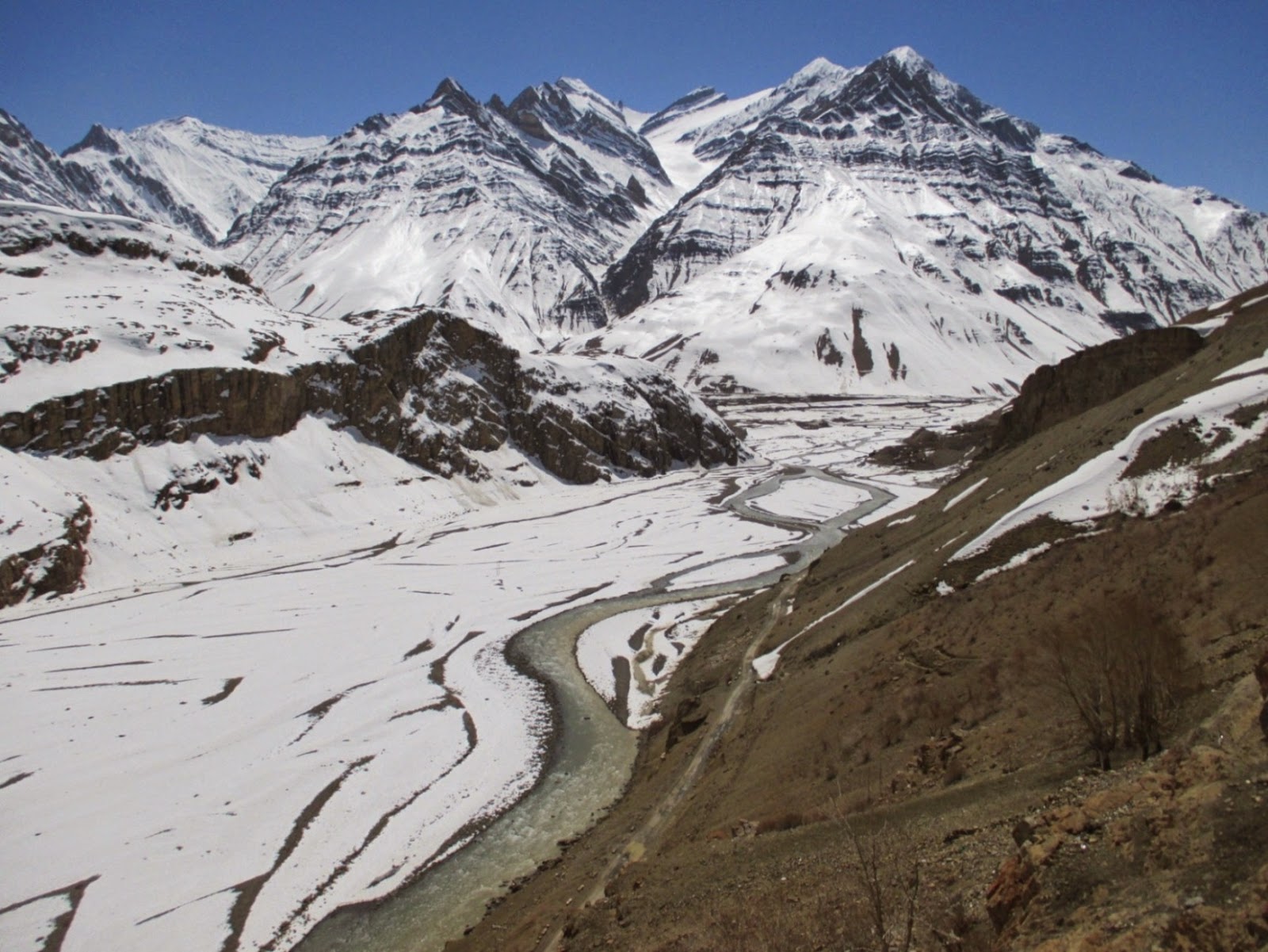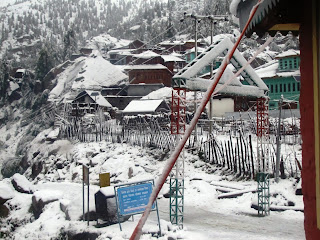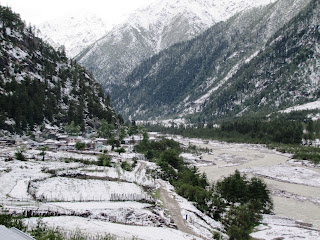Between
last week of April and first week of May this year(2014) a visit through Kinnaur,
Spiti and Pin valley in Himachal Pradesh was unique in a sense that the weather
– a very important element in Himalayas, remained sunny and there were no obstacles
anywhere on road. However, we missed out on few destinations as snow was not
cleared for the vehicular traffic to resume. Following frames have been
selected based on visual appeal and photographic clarity and a few lines in
form of Photo Essay.
Frame 1 Apple Blossom
A drive of 342 km from Chandigarh with a night halt at Narkanda
took us to Kalpa - the finest destination in Kinnaur valley. Apart from great
Himalayan vista, it is famous for its luscious apples. In early summer the profuse
flowering of apple trees everywhere across the habitat makes the surroundings lively.
Frame 2 Kinnaur
Kailash at Sunset
Most sought
after visual at Kalpa is Mt. Kinnaur Kailash (20,000’). At sunset the golden glow
on its peak mesmerizes the tourists.
Frame 3 Cherry Blossom
Kothi – a small village at a distance of 5 km from Kalpa is
famous for Chandrika Devi Temple. By the side of temple, soothing green paddy cultivation
plot is interspaced with blooming apple trees. More conspicuous are a couple of
blooming Cherry trees adding color to landscape with a backdrop of snow-capped
hills.
Frame 4 Nako lake
A drive of 100 km from Kalpa took us to Nako village. At 12,000’
it would rank as highest altitude destination in Kinnaur valley. Tourists savor
the beauty of lake and experience the village life by taking a small walk. The
Gompas located at the extreme end of village is worth while exploring. Famous
are potato fields of Nako, where each fully grown jumbo potato weighs more than 500 grams.
Frame 5 Confluence
Leaving Nako behind and driving along for 115 km we came to the
fringes of Spiti valley. At 3 km mark from Dhankar (12,774‘), one gets the best
visual – very shallow Pin and Spiti rivers merge and flow downstream in
unison as Spiti river.
Frame 6 Dhankar Gompa
It is not
surprising to hear from fellow tourist of seeing too many Gompas for comfort in
the higher altitude of Himachal. The Gompas, apart from serving the religious
interests of Buddhists, seen from a photographer’s point of view, ‘break the
monotony of the vegetation-less rugged hills.’ The red and white colored
Dhankar Gompa clutching the hill slope add an element of balance to the
landscape.
Frame 7 Pin Valley Drive
The Pin valley journey from Dhankar to Sagnam via Kungri has a
combination of good and not so good roads. The scenario changes every minute
and we were in full of anticipation as to what the next stretch of valley would
reveal!
Frame 8 Glacial Lake
We had a bumpy ride on a mud-stone track along the Pin valley
and came across a glacial lake formed due to mud slide from adjoining hills,
blocking partially the Pin river flow.
Frame 9 Pin Valley View from Kungri
While traversing through Pin valley a halt at Kungri village gave
us a bird’s eye view of Pin river, with accumulated snow on both sides and
backdrop of snow-splattered hills.
Frame 10 Pin Structure
Departing from Kungri, it was a sheer chance to have given lift
to a villager from Khar village, who drew our attention to Pin structure near
his village. There is a possibility of Pin river and Pin valley acquiring their
name from it.
Frame 11 Mute
Spectators
Beyond
Kungri, the near vegetation-less tract of Pin valley for a change reveals the
leafless trees, bearing the brunt of harsh winter and still surviving.
Frame 12 Bridge to Sagnam
We reached Sagnam - our final destination in Pin valley by
crossing a bridge over oasis of snow.
Frame 13 Field work
With the advent of summer, the snow cover getting lifted off the
cultivation plots, tilling is a priority among the villagers of Sagnam growing green
pea, barley and buck wheat.
Frame 14 In the lap of Himalayas
Sagnam is a village with picture post card beauty comprising,
the cottages, the snow melt forming rivulets, the backdrop of snow-clad hills
and villagers cultivating the agricultural plots.
Frame 15 Temple &
Gompa
From Sagnam we have a 32 km drive to Kaza - the subdivisional
headquarters of Spiti valley. Here Buddhisma and Hinduism eo-exist. From
balcony of hotel we see Hindu temple at a short trek up the hill and Buddhist
monastery at the base.
Frame 16 Road discovered
Most of
roads at Kaza village and market are narrow mud tracks. By sheer chance, we
discovered a broad road lined with trees, leading our eyes to distant
snow-covered hills.
Frame 17 Kaza landscape
At outskirts of Kaza, the vegetation-less landscape of Spiti
valley comprise of snow-melt forming rivulets leading our eye to few cottages
doting the landscape completing the
scenario.
Frame
18 Dream House
Some
distance from Kaza, a beautiful looking cottage located in a near perfect
pentagonal plot, creates an identity of its own.
Frame 19 Poetry in Sand
The river bed at the outskirts of Kaza is a picture of random
pattern on sand created by snow-melt flowing downstream and changing its course
at random throughout summer till snowfall in winter. The distant settlement is
that of Rangrik village.
Frame 20 Langza Village
Driving from
Kaza for higher elevation destinations, Langza village located on a clearing
with scattered cottages below the Buddha statue standing like sentinel and backdrop
of snow peaks looks gorgeous.
………………………………………………………………………………………………………………………………………………….
My collection of videos and blogs are as per the following url


























































